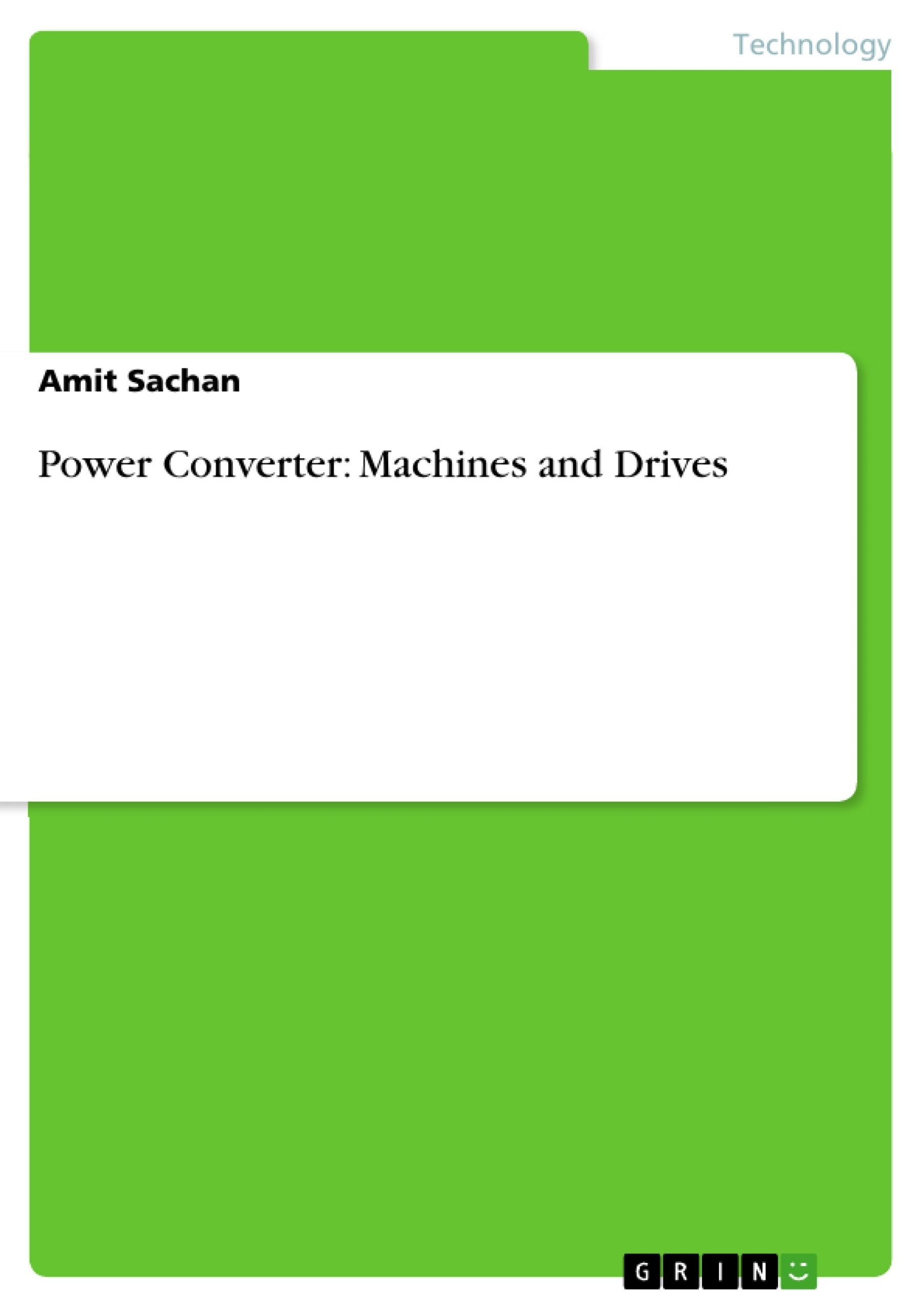Power has two distinct effects in our lives: On one hand, we have to produce it, transmit it and receive it in a way that is affordable, reliable, and with minimal negative effect on the environment. On the other hand, we have to control its use, so that we can make the best out of it, i.e. use it safely and efficiently, and harness it to achieve qualities like speed, accuracy and efficiency. Electrical Engineers should understand the path that energy takes from coal, water, or other fuel to robot, heater or computer, and be able – based on this understanding – to specify or design equipment and systems. In their work related to this material, they will have to use concepts and methods that they learn in courses as diverse as computers, mathematics, electronics and control theory. This course serves only as an introduction to both electrical machines and power electronics. It focuses on the most common devices and systems that an electrical engineer will encounter: AC machines, transformers, rectifiers and inverters, as well as Electrical Drives and Uninterrupted Power Supplies:
Some of this material will be cover in the lectures and the laboratory, and in graduate courses. Students are expected to know exactly what is discuss in class and handed out – homework, notes, assignments,
Inhaltsverzeichnis (Table of Contents)
- Introduction Three-phase systems
- Magnetic circuits and Materials
- Transformers
- Concepts of Electrical Machines: DC Motors
- Three-phase Windings
- Induction Machines
- Synchronous Machines and Drives
- Introduction of Power Electronics
- Chapter 1: Introduction and Three Phase Power
- 1.1 Review of Basic Circuit Analysis
Zielsetzung und Themenschwerpunkte (Objectives and Key Themes)
This course provides an introduction to electrical machines and power electronics, focusing on common devices and systems that electrical engineers encounter. The objective is to understand the path energy takes from its source to its application, allowing for the design and specification of equipment and systems. The course covers topics such as AC machines, transformers, rectifiers, and inverters, as well as Electrical Drives and Uninterruptible Power Supplies.
- Commutation of DC machines
- Dynamic models of Electrical Machines
- Design of Electrical Machines
- Analytical discussion of PWM inverters and matrix converters
- Control of Electrical Drives
Zusammenfassung der Kapitel (Chapter Summaries)
Chapter 1 focuses on a review of basic circuit analysis. It defines key terms like nodes and loops and introduces fundamental laws such as Ohm's Law and Kirchhoff's Current and Voltage Laws. The chapter also establishes the concept of passive sign convention and its application in power analysis.
Schlüsselwörter (Keywords)
This course focuses on electrical machines, power electronics, AC machines, transformers, rectifiers, inverters, Electrical Drives, Uninterruptible Power Supplies, Commutation of DC machines, Dynamic models of Electrical Machines, Design of Electrical Machines, PWM inverters, matrix converters, Control of Electrical Drives, basic circuit analysis, nodes, loops, Ohm's Law, Kirchhoff's Current and Voltage Laws, passive sign convention, power analysis.
- Citar trabajo
- Assist. Professor Amit Sachan (Autor), 2013, Power Converter: Machines and Drives, Múnich, GRIN Verlag, https://www.grin.com/document/213396



